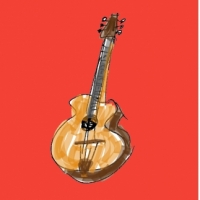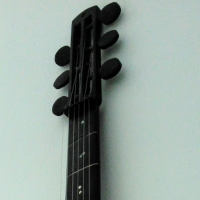DjangoBooks.com
Welcome to our Community!
Categories
- 20K All Categories
- 1.1K General
- 476 Welcome
- 59 Archtop Eddy's Corner
- 146 CD, DVD, and Concert Reviews
- 384 FAQ
- 26 Gypsy Jazz Italia
- 26 Photos
- 202 Gypsy Picking
- 21 Unaccompanied Django
- 15 Pearl Django Play-Along Vol.1
- 17 Gypsy Fire
- 45 Gypsy Rhythm
- 1.4K Gypsy Jazz University - Get Educated
- 130 Gypsy Jazz 101
- 224 Repertoire
- 218 History
- 707 Technique
- 51 Licks and Patterns
- 6 Daniel Givone Manouche Guitare Method Users Group
- 20 Eddie Lang Club
- 1.3K Gypsy Jazz Gear
- 801 Guitars, Strings, Picks, Amps, Pickups and Other Accessories
- 457 Classifieds
- 49 Recording
- 62 Other Instruments
- 18 Violin
- 5 Mandolin
- 22 Accordion
- 7 Bass
- 10 Woodwinds
- 346 Gypsy Jazz Events
- 142 North America
- 109 Europe
- 95 International
In this Discussion
Patenotte Mandolin - Gelas style?
 billyshakes
NoVA✭✭✭ Park Avance - Dupont Nomade - Dupont DM-50E
billyshakes
NoVA✭✭✭ Park Avance - Dupont Nomade - Dupont DM-50E
@Willie & @BillDaCostaWilliams were talking about Patenotte in a separate thread on German guitars but I thought I'd pull this question into a new thread. I'm no mandolin player, but when I saw this top I cringed! I guess it is was designed by a Frenchman named Gelas? Best way for me to describe it is perhaps as an "inverted pliage" but it doesn't appear bent but rather cut in half! Looking at the string routing, it appears it would pull upwards on a presumably fixed bridge. Is that supposed to promote vibration of the top? My understanding of pliage is that it increases downward pressure on the bridge to get more volume and vibration. This might seem to do the opposite? Or maybe the same concept but in a different direction? Seems pretty crazy. Anyone know more about this particular manufacturing oddity?













Comments
Found this interesting cutaway that shows a little more of what is going on. Would be curious to hear anyone's experiences with this sort of instrument. It appears Gelas made guitars like this too.
https://www.vintage-guitar-world.com/shop/lucien-gelas-1926/, (applies to his mandolins, too):
"Lucien Gélas (1 January 1873 – 5 June 1944) was a luthier, classical guitarist, and teacher.
Gélas is well known for inventing and patenting a guitar design which uses a double top: It is often called a Gélas guitar, or a double-top guitar (or double-resonance-guitar) and was common in the first half of the 20th century.
Gélas was awarded a Gold Medal at the Bordeaux Exhibition in 1907 and a Gold Medal at the Brussels Exhibition in 1910 for his double-top instruments.
The two tops of the instruments have a resonating space between them. The inner top is not parallel to the outer one, such that the guitar can be observed to have a particular tilt. Also, the strings run through the bridge (which is on the inner top) and are attached at the bottom, in such a way that the plucked part of the string before the bridge is at an angle to the part of the string after the bridge. This is achieved by having the plucked part of the string slightly angled to the inner top (in conventional guitar it would be parallel), resulting in a raised tension in the inner top.
The patent was first filed in Paris in 1905; and the patent text is downloadable in French and English.
His guitars were played by numerous important artists, particularly in the first half of the 20th century. Heinrich Albert (1870–1950) obtained a Gélas guitar (from Gaudet in Paris) and ascribes his concert successes in a large part to the guitar, praising its carrying sound, ease of responsiveness, and tone-colour. Other players of Gélas guitars included Luise Walker (1910–1998) and Bruno Henze (1900–1978).
His guitars are thought after nowadays!
Gélas produced the instruments with the help of guitar-makers (following his patent), at first Théodore Gaudet and later Jean Roviès, Beuscher, Richard Jacob and others."
That's a wild looking box, never thought something like that existed. Wow...
Found this video, it does sound pretty darn good. Listen to the bass note, they seem to keep going without losing any intensity until he plucks the next note. I don't I have heard that kind of sustain in a guitar before.
It's not even that expensive, $3500 plus shipping from Germany. I'm dearly tempted...
This design was used for a while on classical guitars -- called the "bi-level" guitar. The purpose was to have the angle of the strings at the bridge slightly more perpendicular to the top, to pull it upward -- more like the soundboard of a harp, which is more perpendicular to the strings. (Apparently, that also helps the "impedance match" between the strings and the top.)
The top was horizontal, except for an angled narrow "stairstep" area that was maybe 45 degrees, on which the bridge sat. So the top nearer the neck was at a lower horizontal level, then the top was at an angle for maybe an inch or two at the bridge, then the top nearer the tailblock was at a higher horizontal level.
Talk about pliage -- two bent places parallel to each other!
Here's one such guitar:
Lots of info on Gelas and his patented designs over at the Mandolin Café forum (more than you may want to read)
Including this nugget:
_______________________________________________________________________________________________________________
Lucien Gelas was a well known guitarist, composer, arranger and music teacher. He himself was a student of Miguel Llobet and a friend of Francisco Tárrega. A friendship that must have been special since Tárrega dedicated his famous composition 'Recuerdos de la Alhambra' to Lucien Gelas.
________________________________________________________________________________________________________________
The impression I got from reading opinions on the Gelas mandolins over the years is that any improvement in tone over that of normal single-topped mandolins is relatively minor and probably wouldn't justify the complications of restoring and maintaining a vintage double-top instrument.
That said, I do like the sound of the Gerome Double-top mandolin played by Martin Jonas here: